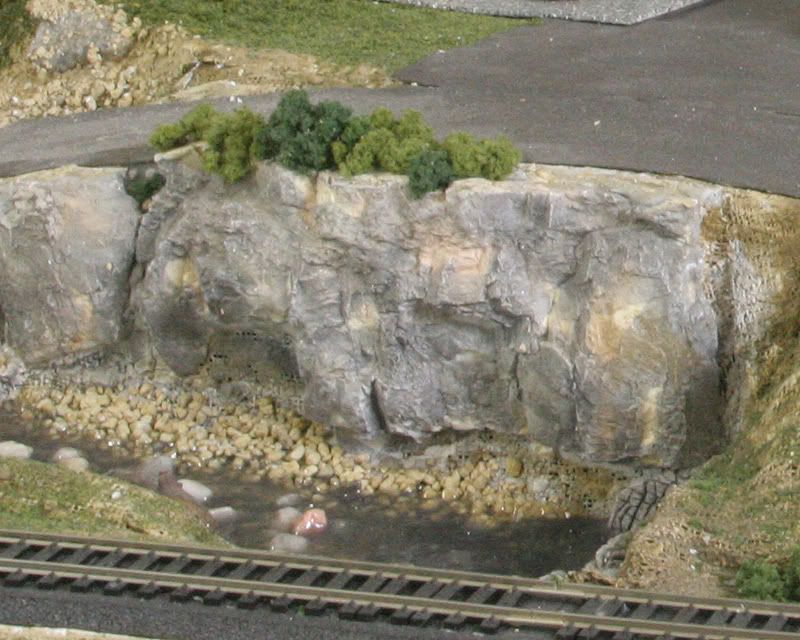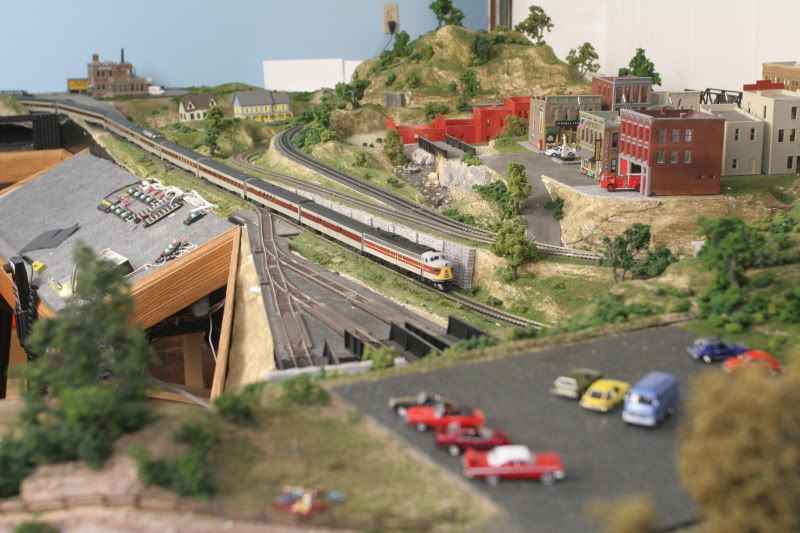Could someone please send me a synopsis of the the directions for staining plaster castings that Tom Yorke used to include in his kits (I have acouple of unbuilt kits somewhere in that mess.) Lacking that, what is your favoritge method of sealing plaster before applyhing the final coat or stain? Thanks for your help. Jim here.
Not sure what a Tom Yorke is… but in regards to “sealing” plaster; for the couple Downtown Deco plaster structure kits (hydrocal) I’ve built, I just used a spray can of plain white primer before painting. With rock molds made with either hydrocal or plaster of paris I never seal them. I just use thinned washes of varying shades of acrylics till I get proper coloration and a bit of drybrushing of highlights. Hope that helps.
Matt
I normally paint the rocks a base coat of flat latex wall paint. I use a cheap white tinted with acrylic craft paints. Then I give the base coat washes of thinned craft acrylics. I find it easier to control the application of the stains on base coated plaster as opposed to raw plaster.
Some area modelers paint the rocks a base coat of black and then drybrush on the rock coloring.
Thanks,Matt. Tom Yorke is the producer of some of the best structure kits ever manufactured. They sell for premium prices at swap meets when you can find them.
Thanks, Dave.
You can stain the paster as you mix it with water by adding a generous drop or three of your favourite paint/mix of paints. Or, you can use masonary dyes, the powder form, the same way…except that masonary dyes are costly because you don’t buy them an ounce at a time.
If the castings are already done, and dry, you can make a heavy initial wash of one drop burnt umber and three drops of medium gray to which perhaps three tablespoons of water are added. Paint up the entire rock with that base stain, and then go lighter for highlights with much lighter colours and washes, including dry-brushing to raise highlights after using india ink stains to bring out the crevices and shadowing.
This is a hydro-cal rock.
It is not sealed.
It has a couple of dabs of burnt umber diluted about 20 to 1, a couple of dabs of yellow ocher diluted about 20 to 1 and then 2 or 3 coats of tunnel black diluted about 40 to 1 on top of the other two.
Just dabbed on with a foam brush and let it run. It will collect in the cracks and look like shadow.

Phoebe Vet,
You have raised my curiosity as to what’s above that beautifull rock. Will you post a picture of the rest of the scene??
Thanks,
Bob
Like this?
As you can see, it’s not done yet.

Outstanding !! What’s left to do? Maybe some people and a few vehicles.
Thanks again for the response.
Bob
Bob:
Some of the buildings are just shells, not even roofs. The track is not ballasted.
Here’s one from farther away.

Dave
Dave,
You can tell I’m an amature with an untrained eye. My scenes are so inferior that I’d be more than pleased to approach your unfinished ones.
Jim, please excuse me from intruding into your original question.
Back to laying fence,
Bob
If I were going to paint a hydrocal structure, where I wanted the paint to be opaque, I’d seal it first with any acrylic-based sealant. Thick artists acrylic (as in Liquitex, not Poly-Scale or Modelmaster Acryl) would also do the trick.
For rocks, however, I use earth toned watercolor washes, because, basically, you WANT rocks to look blotchy and have streaks of various colors through them. The washes soak into the plaster in places and pool up in others, creating great effects. In fact, my 6 year old is a GREAT rock painter – stainer if you prefer – precisely because he IS so sloppy. He achieves better results naturally than I can by trying.